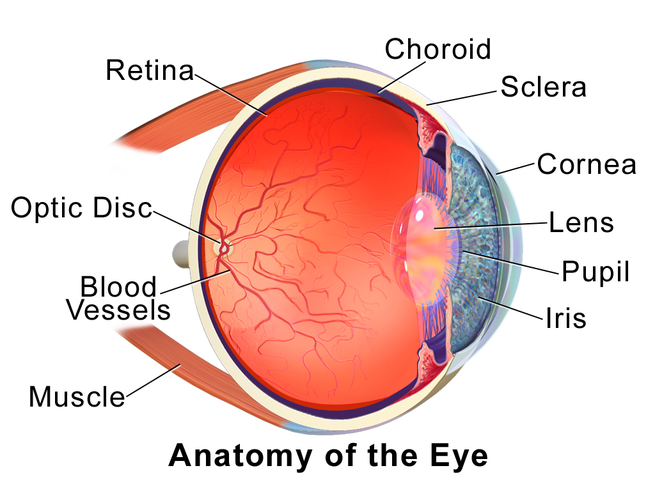
Main Difference
The main difference between Choroid and Uvea is that the Choroid is a vascular layer of the eye, containing connective tissue, and lying between the retina and the sclera and Uvea is a pigmented middle of the three concentric layers that make up an eye
-
Choroid
The choroid, also known as the choroidea or choroid coat, is the vascular layer of the eye, containing connective tissues, and lying between the retina and the sclera. The human choroid is thickest at the far extreme rear of the eye (at 0.2 mm), while in the outlying areas it narrows to 0.1 mm. The choroid provides oxygen and nourishment to the outer layers of the retina. Along with the ciliary body and iris, the choroid forms the uveal tract.
The structure of the choroid is generally divided into four layers (classified in order of furthest away from the retina to closest):
Haller’s layer – outermost layer of the choroid consisting of larger diameter blood vessels;
Sattler’s layer – layer of medium diameter blood vessels;
Choriocapillaris – layer of capillaries; and
Bruch’s membrane (synonyms: Lamina basalis, Complexus basalis, Lamina vitra) – innermost layer of the choroid.
-
Uvea
The uvea (; Lat. uva, “grape”), also called the uveal layer, uveal coat, uveal tract, vascular tunic or vascular layer is the pigmented middle of the three concentric layers that make up an eye.
-
Choroid (adjective)
Resembling the chorion, particularly in containing many blood vessels.
“choroid plexus”
-
Choroid (noun)
The pigmented vascular layer of the eyeball between the retina and the sclera.
-
Uvea (noun)
The middle of the three concentric layers that make up the eye; it is pigmented and vascular, and comprises the choroid, the ciliary body, and the iris.
